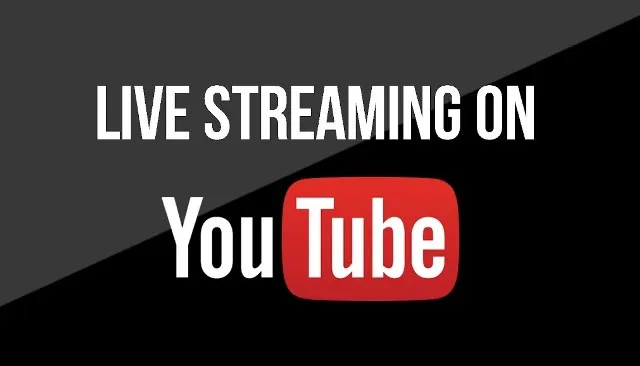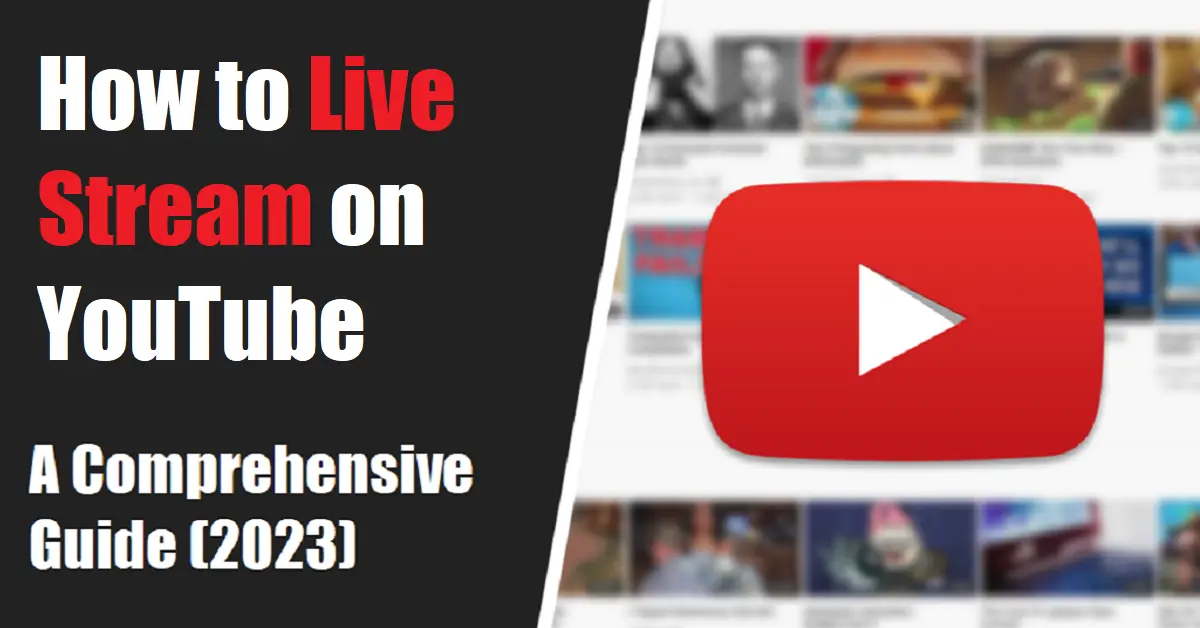How to Live Stream on YouTube – No doubt live streaming on YouTube has become a popular approach for content creators and businesses to connect with their worldwide audience in real-time. And YouTube is one of the most popular and leading platform for live streaming on the internet, with its huge audience base and powerful streaming capabilities. In case you’re new or looking to improve your live streaming skills on YouTube, this article will guide you with complete process of live streaming on YouTube. From setting up your channel to engaging your viewers, we’ll also cover all the essential steps to help you become a successful live streamer.

Understanding the Benefits of Live Streaming
Live streaming offers numerous advantages for content creators. It gave you opportunity to interact with your audience and online subscribers in real-time, fostering a complete sense of community and also building trust and stronger connections. Live streams also enable immediate feedback and engagement, giving you the opportunity to answer questions, respond to comments, and address concerns instantly. Additionally, live streaming on YouTube can increase your channel’s visibility, attract new subscribers, and generate revenue through ad monetization and super chats.
How to Live Stream on YouTube (Initial Set up)
You needs to have a YouTube Channel, before you can start live streaming on YouTube. If you already have a channel, make sure it meets all requirements for live streaming. Else, simply follow these steps to create a YouTube Channel or read below article:
- Sign-in to your Google account if you have, or just create a new one.
- Search and go to YouTube on your browser and simply click on the user icon in the top-right corner.
- You will find there “Create a channel”, simply click on it and follow the on-screen instructions to complete your channel set up.
- Customize your channel by adding a profile picture, banner, and channel description.
Also Read: How to Create a YouTube Channel: A Complete Guide 2023
Configuring Live Streaming Settings
You’re half-way there, once your YouTube channel is ready and completely set up. Further, you need to configure some settings for live streaming as mentioned below:
- Go to YouTube Studio from the YouTube dashboard and click on “Settings” in the left sidebar.
- Under “Channel,” select “Upload defaults” and set your desired privacy, category, and tags for your live streams.
- In the same menu, click on “Live Streaming” to access additional settings like stream optimization, latency, and DVR recording options.
Choosing the Right Equipment for Live Streaming
To ensure the non-stop and high-quality live streams, it’s also crucial to invest in the right equipment. Mentioned below are some equipment you’ll need to start live streaming:
- Camera: Use a webcam with best resolution or a dedicated camera capable of capturing high-resolution video.
- Microphone: Invest in a good-quality microphone for clear and crisp audio.
- Lighting: Proper lighting setup can greatly enhance the visual quality of your live streams.
- Stable Internet Connection: High-speed and reliable internet is essential for uninterrupted streaming.
Optimizing Your Internet Connection
A stable internet connection is vital for seamless live streaming. Also read carefully below tips to optimize your internet connection:
- It’s preferred to use a wired internet connection instead of Wi-Fi.
- Close any unnecessary applications or browser tabs that might consume bandwidth.
- Perform a speed test to ensure your internet connection meets the recommended requirements for streaming.
Creating Compelling Content for Live Streams
Engaging content is the key to attracting and retaining viewers during live streams. Moreover, here are some tips for creating compelling content:
- Plan your live streams in advance and establish a consistent schedule.
- Define the topic and structure of each live stream to maintain a clear focus.
- Interact with your audience by encouraging comments, questions, and shoutouts.
- Incorporate interactive elements like polls, quizzes, and giveaways to keep viewers engaged.
Engaging with Your Live Stream Audience
Building a connection with your audience is essential for successful live streaming. Here are some strategies to engage with your viewers:
- Greet your audience and respond to their comments and questions.
- Address viewers by their usernames to create a personalized experience.
- Use humor, storytelling, and anecdotes to make your live streams more engaging.
- Consider collaborating with other YouTubers also or inviting guests for special live stream events.
Promoting and Marketing Your Live Streams
To attract a larger audience to your live streams, you also need to promote and market your content effectively. Here are some promotion strategies:
- Announce your upcoming live streams on your channel’s homepage, also social media platforms, and other relevant communities.
- Create eye-catching thumbnails and titles to grab the attention of potential viewers.
- Collaborate also with other content creators to cross-promote each other’s live streams.
- Utilize YouTube’s live stream scheduling feature to generate anticipation among your subscribers.
Also Read: How to Avoid Copyright Claims on YouTube? The Ultimate Guide
Monetizing Your Live Streams
YouTube also offers various ways to monetize your live streams. Here are a few methods to consider:
- Enable ads on your live streams to earn revenue through YouTube’s AdSense program.
- Encourage viewers to use super chats, a feature that allows them to make monetary contributions during your live streams.
- Explore sponsorship opportunities and partnerships with brands that align with your content.
Analyzing and Improving Your Live Stream Performance
Regularly analyzing your live stream performance can also help you identify areas for improvement. Consider the following actions:
- Study the YouTube Analytics dashboard to gain insights into viewership, watch time, and audience demographics.
- Analyze viewer engagement also by examining comments, likes, and shares.
- Experiment with different formats, topics, and presentation styles to understand what resonates best with your audience.
Troubleshooting Common Live Streaming Issues
Live streaming can sometimes encounter technical challenges. Here are a few common issues and their potential solutions:
- Poor video quality: Check your camera settings, lighting conditions, and internet connection.
- Audio problems: Ensure your microphone is properly connected and configured.
- Lag or buffering: Lower your video quality settings or upgrade your internet plan.
- Stream interruption: Restart your streaming software or consider using backup streaming solutions.
Ensuring Copyright Compliance
When live streaming on YouTube, it’s also crucial to respect copyright laws and guidelines. Follow these tips to avoid copyright issues:
- Use copyright-free or licensed music, images, and videos in your live streams.
- Familiarize yourself with YouTube’s policies on copyrighted content and fair use.
- Give credit to the original creators whenever you use their content in your live streams.
Also Read: How to Avoid Copyright Claims on YouTube? The Ultimate Guide
Managing Your YouTube Live Stream Archive
YouTube automatically saves your live streams as videos in your channel’s archive. Here’s how to manage your live stream archive:
- Access YouTube Studio and go to the “Content” tab.
- Filter by “Live” to find your live stream videos.
- Edit the video settings, add timestamps, create highlights, or delete unwanted recordings.
Collaborating and Cross-Promoting with Other YouTubers
Collaborating with other fellow YouTubers in same niche can also help you expand your audience reach and attract new viewers as well. Moreover, consider these strategies for collaboration:
- Reach out to YouTubers in your niche and propose collaborative live streams or guest appearances.
- Participate in panel discussions or live stream events organized by other content creators.
- Cross-promote each other’s live streams by mentioning and linking to their channels in your video descriptions and live stream announcements.
Staying Consistent and Building Your Live Streaming Brand
Consistency is key to building a successful live streaming brand. Additionally, here are some tips to stay consistent:
- Stick to a regular live stream schedule to create anticipation and build viewer loyalty.
- Develop a unique style and branding elements that distinguish your live streams from others.
- Continuously engage with your audience and listen to their feedback and suggestions.
- Evolve your content based on audience preferences while staying true to your brand.
Conclusion
Live streaming on YouTube offers an exciting opportunity to connect with your audience in real-time and build a thriving community. By following the above mentioned steps and techniques, you can easily set up your channel, create quality content, engage with your viewers in real time, promote your live streams, and grow your strong presence on YouTube. Also remember to stay consistent, analyze your performance, and adapt to the evolving needs and preferences of your audience. Embrace the power of live streaming and enjoy the journey of connecting with viewers from around the world.
FAQs
- Can anyone live stream on YouTube?
- Yes, anyone with a YouTube channel in good standing can live stream on the platform.
- Do I need expensive equipment to live stream on YouTube?
- While having quality equipment can enhance your live streams, you can start with basic equipment like a smartphone or a webcam.
- Can I monetize my live streams on YouTube?
- Yes, you can also monetize your live streams through ads, super chats, and sponsorship opportunities.
- How can I engage with my live stream audience?
- Engage with your audience by responding to comments, addressing questions, and incorporating interactive elements like polls and giveaways.
- What should I do if I encounter some technical issues while live streaming?
- Troubleshoot common issues like poor video quality or audio problems by checking your settings and internet connection. Restarting your streaming software can also help.


Leave a Reply